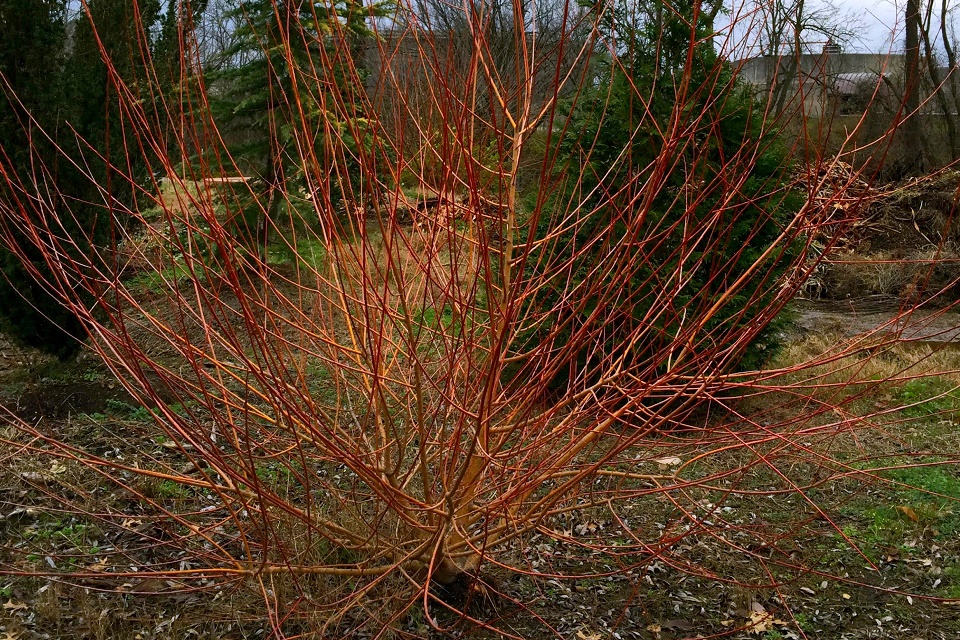
This Willow Is a Standout in Winter Gardens
From the UT Gardens
January 2016 Plant of the Month:‘Flame’ Willow
Submitted by Sue Hamilton, Director of the University of Tennessee Gardens
Most people recognize a weeping willow, but would it surprise you that there are at least 400 willow species with many different growth habits? There are tree willows, shrub willows and even groundcover willows. Many have aesthetic features making them valuable landscape plants.
While I appreciate the graceful and pendulous form of the weeping willow, a fairly new plant to me, and one which I just have to tell others about, is ‘Flame’ willow (Salix x ‘Flame’). Flame willow features vibrant orange-red stems that are especially showy in the winter months. As a deciduous plant, Flame willow has no foliage in the winter, bringing even greater attention to its glowing stems.
This shrub-type willow can grow to be about 20 feet tall at maturity, with a spread of 15 feet. If this is too big for your landscape, rejuvenation pruning (cutting a plant to the ground) every year or so is an advisable way to manage this plant. Such pruning forces new stems to grow, which not only keeps growth in check but also produces stems that have much more vibrant orange-red color than old-growth stems. Flame willow grows at a fast rate, up to 8-feet in one growing season. It has an oval, dense form with bright green narrow lance-shaped foliage during the growing season turning variable shades of yellow before dropping in late fall. The ideal time to prune this willow is late winter to early spring.
This hybrid willow shrub performs best when grown in full-sun. The coloration of the stems will not be as bright when grown in partial sunlight. It is an amazingly adaptable plant, tolerating both dry conditions and even some standing water. It is considered to be drought-tolerant, so it could be used in a moisture-conserving landscape. It is a forgiving plant in that it is not particular as to soil type or pH.
For landscape use, be sure to site this shrub where everyone is treated to its orange-red glowing stems in the winter, including a view from inside your home looking out your own windows. I’ve seen this shrub used as an effective backdrop or privacy screen. Used alone, it makes a striking focal plant in the winter landscape. The relatively fine foliage texture of Flame willow sets it apart from other landscape plants with less refined foliage. It’s also a desirable shrub for providing protection and cover for birds and other wildlife. Many butterflies sip the nectar from the white, inconspicuous flowers and use the leaves for their larvae. The winter branches are ideal for cutting and using in a decorative vase for indoor interest as well as for mixing in winter evergreen arrangements.
The UT Gardens includes plant collections located in Knoxville, Jackson and Crossville. Designated as the official botanical garden for the State of Tennessee, the collections are part of the UT Institute of Agriculture. The gardens’ mission is to foster appreciation, education and stewardship of plants through garden displays, educational programs and research trials. The gardens are open during all seasons and free to the public. For more information see the Gardens website: http://utgardens.tennessee.edu.
Contact:
Dr. Susan Hamilton, UT Department of Plant Sciences